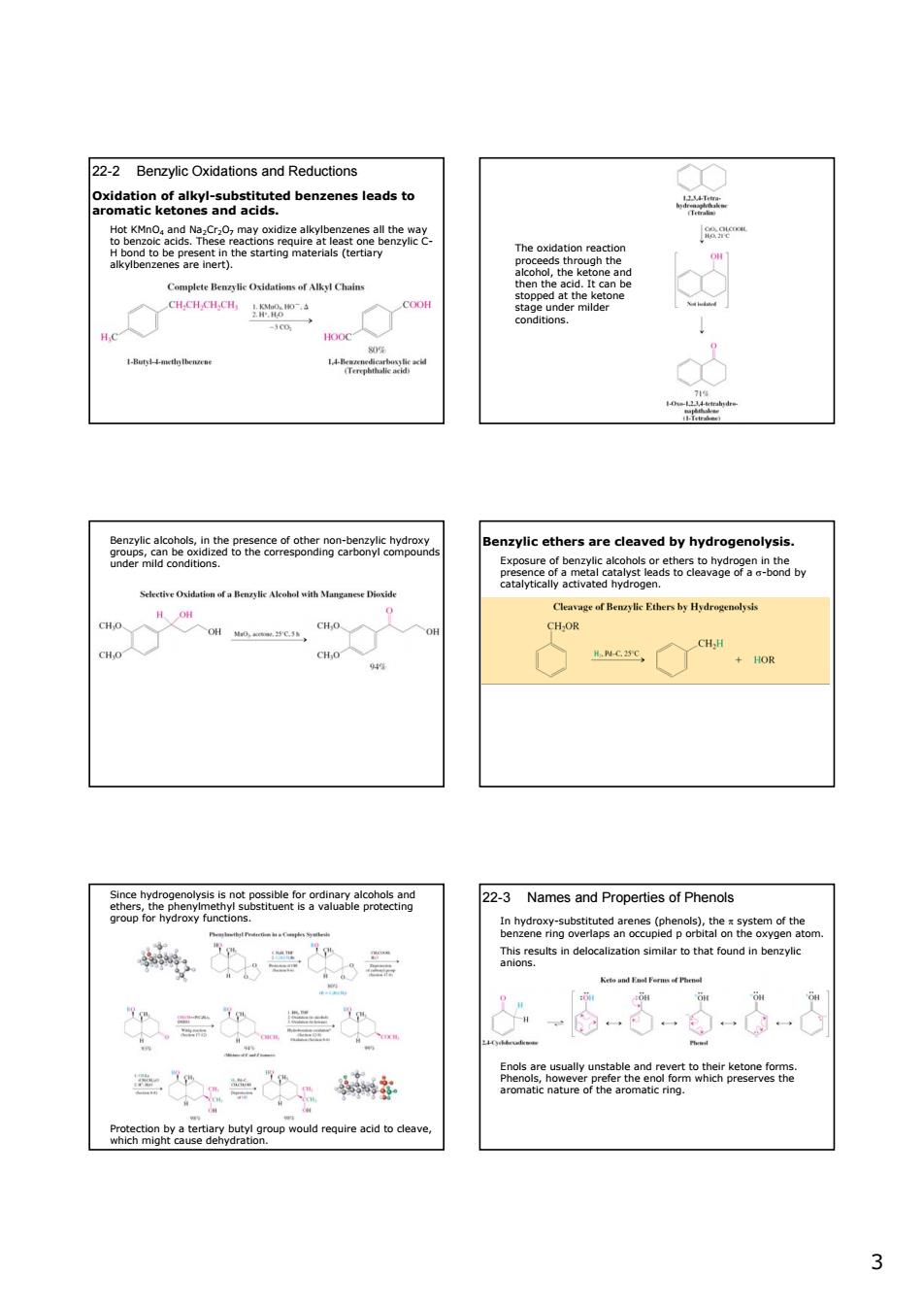正在加载图片...

22-2 Benzylic Oxidations and Reductions PdniRnaiahag20adbonzenes1eadsto nwg zylic ethers are cleaved by hydrogenolysis HOR 二a 22-3 Names and Properties of Phenols 兽 &---6--8 安 Rets0kaltertearaoarodpwoudrequheacdodeave, 33 22-2 Benzylic Oxidations and Reductions Oxidation of alkyl-substituted benzenes leads to aromatic ketones and acids. Hot KMnO4 and Na2Cr2O7 may oxidize alkylbenzenes all the way to benzoic acids. These reactions require at least one benzylic CH bond to be present in the starting materials (tertiary alkylbenzenes are inert). The oxidation reaction proceeds through the alcohol, the ketone and then the acid. It can be stopped at the ketone stage under milder conditions. Benzylic alcohols, in the presence of other non-benzylic hydroxy groups, can be oxidized to the corresponding carbonyl compounds under mild conditions. Benzylic ethers are cleaved by hydrogenolysis. Exposure of benzylic alcohols or ethers to hydrogen in the presence of a metal catalyst leads to cleavage of a σ-bond by catalytically activated hydrogen. Since hydrogenolysis is not possible for ordinary alcohols and ethers, the phenylmethyl substituent is a valuable protecting group for hydroxy functions. Protection by a tertiary butyl group would require acid to cleave, which might cause dehydration. 22-3 Names and Properties of Phenols In hydroxy-substituted arenes (phenols), the π system of the benzene ring overlaps an occupied p orbital on the oxygen atom. This results in delocalization similar to that found in benzylic anions. Enols are usually unstable and revert to their ketone forms. Phenols, however prefer the enol form which preserves the aromatic nature of the aromatic ring